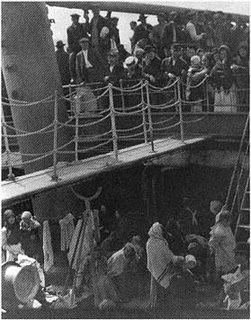A Century in Pictures
The Target Collection of American Photography: A Century in Pictures Celebrates 30th Anniversary of Target Corporation’s First Gift
Museum of Fine Art, Houston
As an art student, all my art history courses have shared a similar format: sit down in a large lecture hall, lights are dimmed while we watch slide after slide, narrated by the professor’s voice reciting details we are expected to memorize. Lucky for us students, most professors are aware of a disconnect in the experience described. They warn us about the disconnect: ‘These slides don’t even compare to the real thing.” My reaction has become “Yeah, yeah – I know!” Whenever we, as art enthusiasts, go to an exhibition we are looking for something; I look to validate that statement which has become cliché. My favorite art history course is The History of Photography, which is why I chose to review “A Century in Pictures”, now on display at the Museum of Fine Arts, Houston until Feb. 25th.
“A Century in Pictures” traces the changes in photography from the beginning thru the late 20th century. This show recognizes noted masters such as Alfred Stieglitz and Edward Weston, who helped established photography as one of the most potent mediums for artistic expression. This exhibit is displayed in a single room. Most of the photographs are hung on walls with some of the work encased on pedestals throughout the room. To view the show chronologically, turn left after entering; please note this show is not strictly a chronological survey.

A written descriptive blurb about Camera Work, Stieglitz’s influential journal, as well as his photographs The Steerage, Georgia O’Keefe, Hand of Man, and The Pool Deal are compelling reminders of the underpinnings of Modernism. Clarence White’s Drops of Rain, Edward Weston’s Epilogue and Two Shells, and Imogen Cunningham’s Magnolia Bud all signify ‘A Modern Impulse’. Sections of the exhibit with titles such as ‘Landscape and the Built Environment’ are exemplified thru work by Catherine Wagner and Joel Sternfield. Harry Callahan’s Telephone Wires and Ray K. Metzker’s Spruce Street Boogie illustrate ‘A New Aesthetic’. ‘Portraiture’ is represented in a series by Richard Avedon of his father. The portraits of Avedon’s father are unlike the portraits of drifters or mine workers found in his book American West; there are consistencies among the studies of these subjects. However, the portraits of his father contain a measure of familiarity and momentous consequence not found in the American West work. Lastly a nod to post-modernism with the section ‘A Critique of Representation’ is shown with the use of “Mona Lisa Problematics of Intensity Theory 1 & 2” by Suzanne Bloom and Ed Hill better known as Manual and also “Space/Time Metamorphosis #1” by the late Robert Heinechen.
A few fun facts about American business and the organization that made this experience a possibility. George D. Dayton founder of the Dayton Company established the practice of giving 5% of pre-tax profits to good causes in 1946. The Dayton Company opened its first Target store in 1962 and today operates about 1,500 stores. In 2000, the company was renamed the Target Corporation. The Target Corporation gives back $2 million each week to education, art, and social services. Target has partnerships with designers such as Michael Graves and Isaac Mizrahi to ensure aesthetically pleasing quality products. It’s no surprise that a company that puts so much importance on good design would also support the art community. Target sponsors events such as Target Free Friday Nights at the Museum of Modern Art in New York City. Their support isn’t confined to New York…through Target Store Grants funding is provided for programs across the United States that make art accessible to the public creating a cultural experience. The Museum of Fine Arts, Houston is one such recipient of the Target Store Grants, which helped establish the photography department in 1976. Since then, Target has provided funding for eight previous exhibitions. A Century in Pictures Exhibition is the ninth MFAH exhibition to show works from the Target Collection and will travel to the Austin Museum of Art and the Art Museum of South Texas in Corpus Christi. The Target collection at MFAH includes about 420 photographs.
Because Target supports artists, I maintain that artists might want to support Target and, as a side note, Wal-Mart doesn’t give to art!
Welcome!
Welcome to
Aperture's new extern blog. Here you will find students from around the country discussing photography in all its forms.


